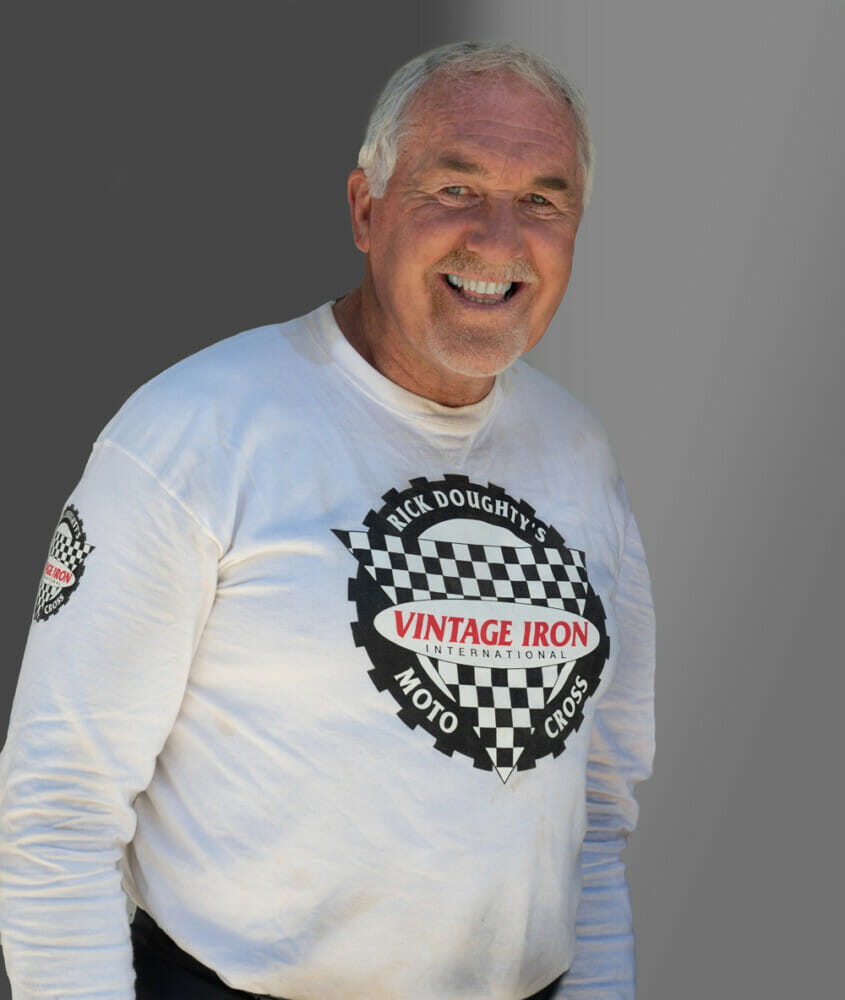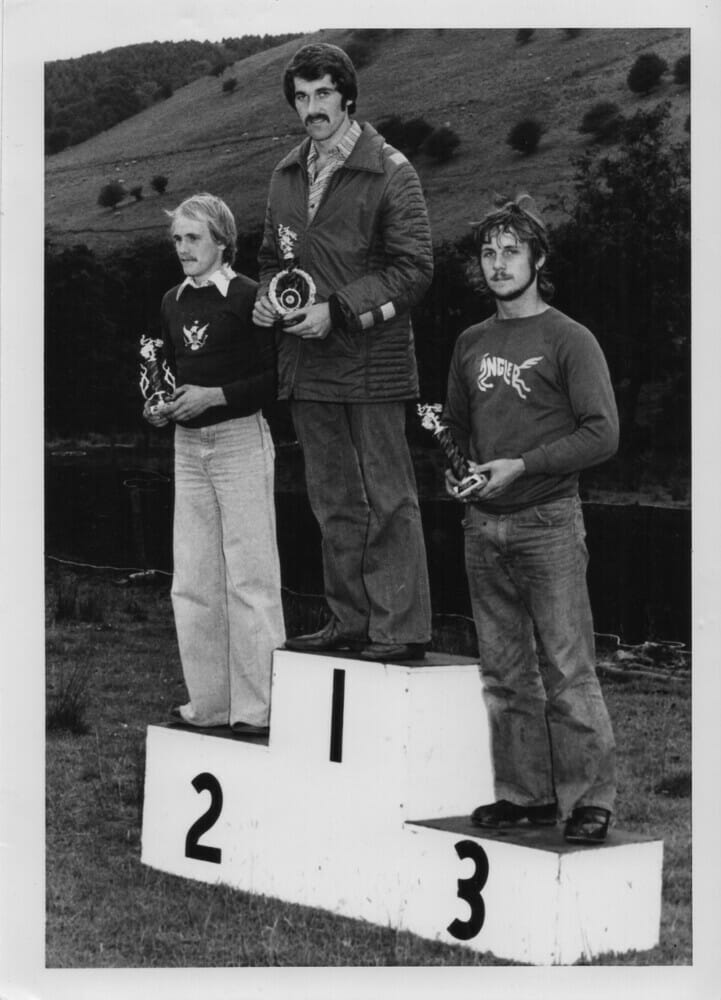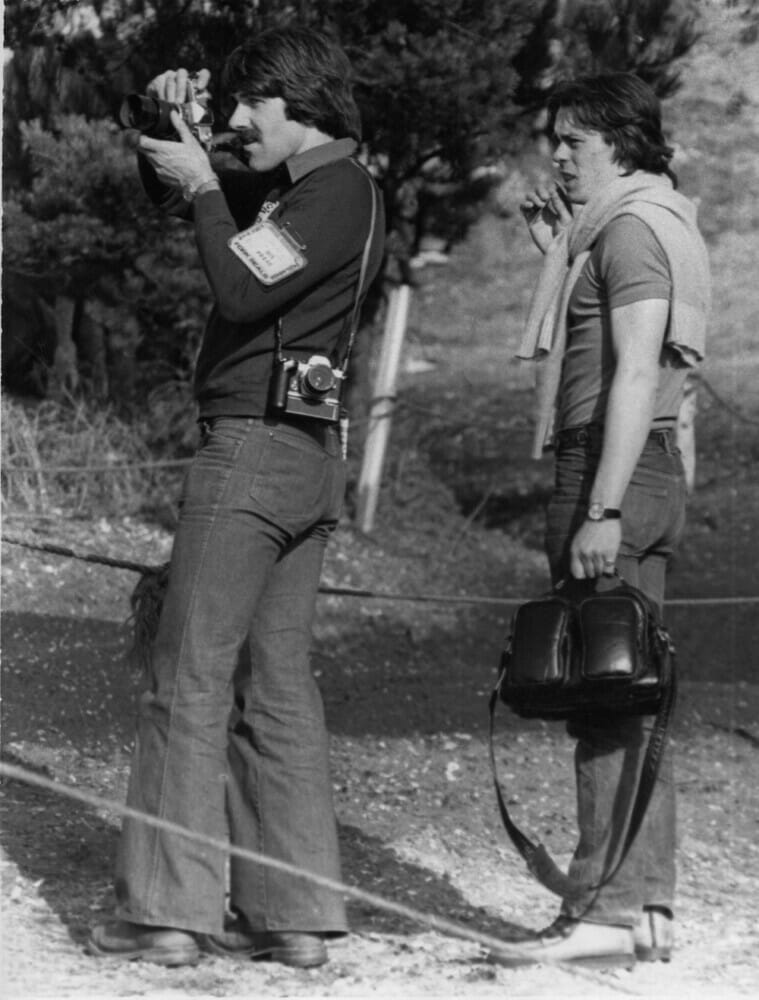Cycle News Archives
COLUMN
Documenting the Golden Era of Motocross
As I was scrambling up and down the hills of RedBud MX during practice for this year’s Motocross of Nations, I looked up and saw a tall figure carrying a ton of photo gear and looking equally as sacked as I was. Then it hit me. I’ll be damned if that isn’t David Dewhurst!
I knew Dewhurst from my early years as a racing photographer. He was one of the shooters I looked up to, always admiring his fabulous images in the glossy mags of the 1980s. I also knew that Dewhurst was mainly gone from motorcycling racing by the ’90s, off working in the more lucrative world of automotive PR photography. So, seeing him all these years later at a motocross race was a big surprise.
“David,” I shouted, trying to be heard over the racing bikes. Dewhurst looked over and a big grin came across his face.
“Larry my friend. Look at us, a couple old gimps out here playing in the dirt,” he shot back.
Later that day, during lunch break, we had a moment to catch up. I was eager to learn what brought him back to a motocross event like this after all these years. It turns out Dewhurst was coming back to his first love of motocross and enjoying every minute of it. He also had a massive coffee table book project about to debut that focused on what many consider today as the golden era of motocross.

Dewhurst grew up in England and was a motorcycle enthusiast and rider from a young age. He went to school to study photography, and during that period, his career as a racing photographer and correspondent began.
“I gravitated towards motorcycling events and began shooting for Motorcycle Weekly,” Dewhurst said. “When I left college, I got a job at a weekly newspaper. The boss’s son became interested in motocross and joined a local motocross club I’d started in the area. I persuaded the boss that what the country really needed was a weekly newspaper dedicated to off-road racing, and that’s how Trials and Motocross News (aka TMX) was born back in 1976.
“Unfortunately, I have to report the demise of that newspaper as of a week ago,” Dewhurst said. “Forty-six years later it went out of business due to lack of advertising, the internet and god knows what else. It’s sad because the paper was a huge success for many years and people are very upset that they aren’t going to get it anymore.”
Dewhurst moved to America in 1980 when he was hired as the technical editor at Cycle Guide magazine. “I did the Cycle Guide thing for four or five years before branching out on my own to do motorcycle and car photography.
“Working in the motorcycling industry during that period was an amazing thing to be a part of,” Dewhurst said. “It was an exciting time with new and innovative motorcycles coming out every year and racing, of course, was really at a peak as well.”
Interestingly, Dewhurst was one of several British expatriates who made a strong impact in the motorcycling industry, like three-time AMA Superbike Champion Reg Pridmore, Speedway racer Barry Briggs and magazine publishers and race promoters Bruce Cox and Gavin Trippe.
“I think it was the sunshine that brought all of us out here,” Dewhurst said.
“By the late 1980s, I went away from the motorcycling end of things and only have really come back to it in the last 10 years or so,” Dewhurst said.

Dewhurst’s photography company thrived during the 1980s. He said he gradually lost touch with the motorcycling industry when the automotive side of his business became so successful. His primary clients for 30 years were Toyota and Lexus. However, over time he did PR photography for just about every car maker.
Life was good, but Dewhurst admits he missed the camaraderie with his friends in the motorcycling industry.
“I’d been friends with guys like Ron Lawson [Dirt Bike editor] and Rick Doughty at Vintage Iron for over 30 years, and I just sort of wandered back into motorcycling as much for the friendship with all the people as much as anything.”
So gradually, Dewhurst made his way back to motocross by riding his vintage 1978 Husqvarna 390 in AHRMA motocross events. “It was fun to get back into the family,” he said. “That’s how it felt anyway.”
And as he made his way back into motorcycling, Dewhurst’s attention turned more and more toward his vast photo collection that had been largely untouched for decades.
“I thought I’ve got to use these somehow, do something with them,” he said. “I thought I’d just do a big picture book with a bunch of captions. I started to work on that and go through and digitize the images. As I was going through that process, I realized that there were so many stories behind these pictures. So, then the theme of the book changed from just a picture book to more of a story thing.
“As I started to talk to the riders, team owners, mechanics and people who were around, they all wanted to tell their story. And they said, ‘Well if you do my story, you should do this story,’ and it kind of just snowballed and became this thing that got out of control.”
While writing the book, Dewhurst interviewed around 60 key figures in the motocross industry, many of whom he videoed for the project.
“In the end, I got so much information I couldn’t squeeze it all in,” Dewhurst said. “The book ended up being 480 pages, which is bigger than anything that’s ever been done in the motocross side of the world. We were pushing the limits of printing and binding at 480 pages.”

Dewhurst said he wanted the book to go into depth. “I didn’t want two pages on Roger DeCoster and a page on Brad Lackey, or whatever, I wanted to get a little bit more of a story going. All together 11 champions ended up being in the book and each chapter is at least 20 pages on each guy. So, a lot of words, a lot of pictures and hopefully I’ve scratched a bit below the surface to give people an idea of what these guys were about and what they went through during their careers.”
The result of Dewhurst’s exhaustive work is Motocross: The Golden Era. The book covers the period from 1970 to 1986. When asked why this timeframe, Dewhurst said, “Those dates are significant from my point of view in that the early 1970s was when motocross technology really took off. Long-travel suspension systems, engine technology, exhaust technology, all this exploded in the very early ’70s. And then the ending date, 1986, was the end of the factory-bike era in the U.S. So, it is the story of an era of unbelievable technological advances.”
As a photo enthusiast, Dewhurst has been through it all, from the complete manual settings and film days to the modern digital era. He said he started shooting races with a simple Nikkormat and a couple of basic lenses. One funny photography story has to do with the book’s cover shot. It’s an image of Roger DeCoster taken in 1974 at the British Motocross Grand Prix at Donington Park.
“I had this old Rolleiflex, which was this twin-lens reflex, 2 1/4-inch square negative camera usually used for portraits or landscapes back in the day,” Dewhurst said. “And with this Rolleiflex you looked down through a viewfinder at the top of the camera. The problems is what you see through the viewfinder is laterally inverted, so you’re looking at a subject that is upside down and flipped from back to front. If you’re trying to follow a motocross bike across the track it gets a little confusing to get your brain around doing everything backwards. Luckily, I did get some good action pictures and the one I liked most of all is the cover of the book.”
Dewhurst saw it all up close in that era of motocross, and he admits that clearly, Roger DeCoster stands out as the rider who was his biggest hero.
“Even today, if I get a text message from him, it gives me chills that I’m getting a text from Roger DeCoster!” Dewhurst said. “But there were so many heroes of that time like Heikki Mikkola and Brad Lackey. God bless him for slogging through 10 years, almost 11 years of racing in Europe, before finally winning a World Championship. That was something anybody could be proud of. People like Graham Noyce, who was amazing, and David Thorpe, who did an astonishing job of winning the title and making it look so good. And then everybody’s hero Bob Hannah, who I talked to the other day and, in his unflinching manner, said that guys like Roger and Heikki would blow away the riders of today.
“There are so many… David Bailey. I was and still am such a fan of David. His riding ability, his technical approach to riding and racing is something that we hadn’t seen before, and he set us on the path of today where riders look at racing in a more technical way versus just having a wide-open throttle. And then guys like Ricky Johnson and Broc Glover who were able to win titles on pretty mediocre machinery when you look back on it. So many racers, and that’s been the fun of doing this book, getting to sit down and interview these riders and renew those friendships that we had so many years ago when we were traveling around week after week on the motocross circuit.”
In terms of races, Dewhurst looks back and says the most exciting and fun race to cover was the epic David Bailey versus Ricky Johnson battle at the Anaheim Supercross in 1986. “The battle lap after lap, the fans on their feet the whole race, they almost went down several times but didn’t. It was probably the best race I’ve ever seen.”
While Dewhurst’s book focuses on a period of motocross racing that ended nearly 40 years ago, he does not live exclusively in the past. We finished our conversation with how lucky we were to witness this year’s Team USA victory at the Motocross of Nations. Dewhurst said shooting that event and watching the fan reaction is right up there in terms of all-time great memories he has from a lifetime in the sport. CN
You can get Motocross: The Golden Era by visiting www.motocrossthegoldenera.com.
Click here to read the Archives Column in the Cycle News Digital Edition Magazine.
Click here for all the latest Supercross and Motocross news on Cycle News.
Subscribe to nearly 50 years of Cycle News Archive issues
